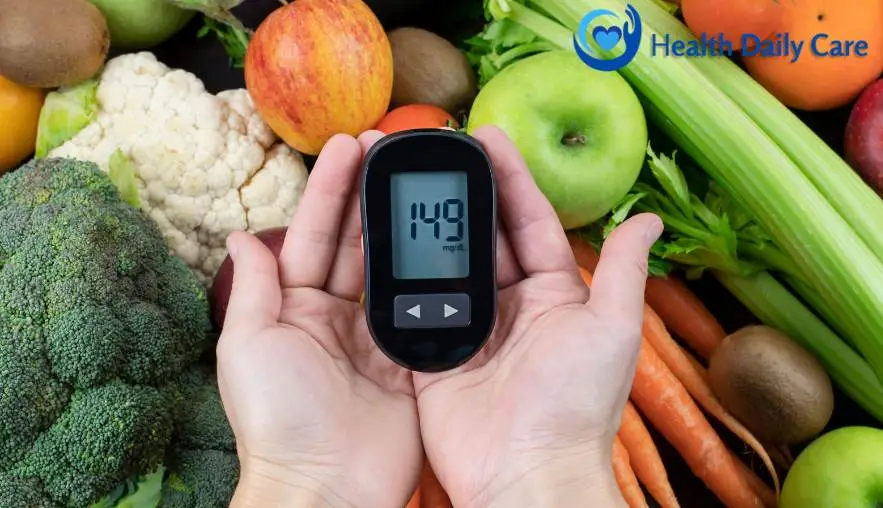Chili is a popular and versatile ingredient in many cuisines around the world. Its bold and spicy flavor adds depth to countless dishes, from hearty stews to zesty salsas.
For diabetics, navigating food choices can be a complex task, with a need to strike a balance between enjoying flavorful meals and managing blood sugar levels.
The question of whether chili is a healthy option for those with diabetes is a common one. Is chili healthy for diabetics?
It’s important to consider various factors such as the impact of chili on blood sugar levels, its nutritional content, and potential health benefits. Let’s delve into this topic and explore the relationship between chili and diabetes in more detail.
Does chilli raise blood sugar?
Capsaicin, the active component in chili peppers, has been studied for its potential to improve insulin sensitivity and lower blood sugar levels.
Some research suggests that capsaicin may have a positive effect on glucose metabolism and insulin action, which could potentially benefit individuals with diabetes or those at risk of developing the condition.
However, it’s essential to consider the big picture. The impact of chili on blood sugar levels is not solely determined by capsaicin.
The way chili is prepared, the accompanying ingredients in a dish, and an individual’s overall diet and lifestyle play significant roles in how chili may affect blood sugar.
For example, if you’re consuming chili as part of a balanced meal that includes fiber-rich foods, lean proteins, and healthy fats, its impact on blood sugar may be moderated.
On the other hand, if you’re indulging in chili-loaded dishes with high-carb sides or sugary beverages, the overall effect on blood sugar could be different.
It’s also worth noting that some people may experience gastrointestinal discomfort after consuming spicy foods like chili, which could indirectly impact their blood sugar levels due to changes in appetite and food intake.
Are chili beans OK for diabetics?
Chili beans are a good source of fiber and protein, which can help in managing blood sugar levels.
The fiber in chili beans slows down the absorption of sugar, preventing rapid spikes in blood glucose levels. This can be particularly beneficial for individuals with diabetes.
Additionally, chili beans are low in fat and cholesterol, making them a heart-healthy choice.
For individuals with diabetes, maintaining heart health is essential, as diabetes increases the risk of heart disease.
However, it’s important to keep portion sizes in mind when incorporating chili beans into a diabetic meal plan.
While they offer numerous health benefits, overindulging in chili beans can still lead to spikes in blood sugar levels.
When preparing chili beans for a diabetic-friendly meal, opt for healthier cooking methods such as boiling or steaming instead of frying.
This helps retain the nutritional value of the beans while keeping added fats to a minimum.
In conclusion, chili beans can be a part of a balanced and healthy diet for individuals with diabetes. When consumed in moderation and prepared using healthy cooking methods, chili beans can contribute to better blood sugar management and overall well-being.
Always consult with a healthcare professional or a dietitian to determine the best dietary choices for managing diabetes.
Remember, maintaining a balanced diet, regular exercise, and monitoring blood sugar levels are key components of diabetes management.

Is chili healthy for diabetics?
Chili, often known for its fiery and bold flavor, is a popular ingredient in many cuisines around the world. From chili con carne to spicy chili sauces, this versatile ingredient adds a kick to countless dishes. But is it suitable for individuals with diabetes?
For diabetics, maintaining stable blood sugar levels is crucial, and the food choices play a significant role in achieving this.
When it comes to chili, it can actually be beneficial for diabetics due to several reasons.
First and foremost, chili peppers contain a compound called capsaicin, which is responsible for the heat and spiciness of the peppers.
Interestingly, capsaicin has been linked to potential benefits for individuals with diabetes. Studies have suggested that capsaicin may help improve insulin sensitivity, which is important for diabetics in managing their blood sugar levels.
Furthermore, chili peppers are low in calories and carbohydrates, making them a great addition to a diabetic-friendly diet.
They can add flavor and spice to meals without significantly impacting blood sugar levels, especially when used in moderate amounts.
Additionally, chili peppers are rich in vitamins and minerals, such as vitamin C and vitamin A, which are beneficial for overall health.
These nutrients can contribute to a well-balanced diet for individuals with diabetes, helping to support their immune system and overall wellness.
It’s important to note that while chili can offer potential health benefits for diabetics, it should be consumed in moderation.
Excessive consumption of spicy foods may lead to digestive discomfort for some individuals, and portion control is key to enjoying the benefits of chili without any negative effects.
Which chilli is good for diabetes?
let’s break it down:
- Fresh Chili Peppers: These are the spicy peppers like jalapeños or habaneros. They have something called capsaicin, which can be good for people with diabetes. Capsaicin might help insulin work better, which is important for managing blood sugar. Also, it can help people feel full, so they might eat less, which is good for managing weight.
- Chili Powder: This is what we use to make food taste spicy. But some chili powders have added sugar or salt, which can be bad for blood sugar. So, it’s better to choose chili powder without extra stuff added to keep blood sugar levels steady.
- Chili Dishes: Like chili con carne (with meat) or vegetarian chili, can be healthy if made with good stuff like lean protein from meat or beans, lots of fiber from beans and veggies, and not too much sugar. But it’s important to be careful about how much we eat and what’s in the dish.
- Be Careful: It’s important to eat chili in the right amount and be aware of what’s in it. Eating too much or choosing chili with added sugar or salt can make blood sugar go up, which is not good for people with diabetes. So, it’s best to be mindful and pay attention to what we’re eating.
In summary, chili can be a yummy and healthy choice for people with diabetes if eaten the right way. Choosing fresh chili peppers, pure chili powder, and chili dishes made with good ingredients can help keep blood sugar levels steady and support overall health.
Is chili a low glycemic food?
Let’s make it simple:
- What’s Glycemic Index (GI): It’s a way to measure how fast food raises your blood sugar. Foods with low GI raise it slowly, while high GI foods raise it quickly.
- Chili and GI: Chili made with fresh stuff like tomatoes, onions, peppers, and beans can have low GI. That means it doesn’t make your blood sugar spike fast.
- Watch the Ingredients: Some chili ingredients like sugar can make the GI higher. But if you make chili with fresh ingredients and not a lot of sugar, it stays low.
- Healthy and Tasty: Chili is not only yummy but also good for you, especially if you’re watching your blood sugar. So, eating chili with fresh stuff is a smart and tasty choice!
So, if you enjoy chili made with fresh ingredients, you’re making a healthy choice that won’t make your blood sugar jump up quickly.
Is spicy food OK for diabetics?
Let’s break it down easily:
- Spicy Foods Can Be Good: Spicy foods, like those with chili peppers or cayenne, have something called capsaicin, which is good for health. It can help with inflammation and make insulin work better, which is important for people with diabetes.
- But Watch Out for Salt: Sometimes, spicy foods have a lot of salt, which can be bad for the heart and blood pressure, especially for people with diabetes. So, it’s important to be careful about how much salty spicy food you eat.
- Keep an Eye on Fat and Calories: Some spicy foods can be high in fat and calories, which can make it harder to manage weight. People with diabetes need to be careful about their weight, so it’s good to choose spicy foods that are lower in fat and calories.
- Balance is Key: The most important thing is to eat spicy foods in moderation and balance them with other healthy foods. That means not eating too much spicy food, choosing ones with less salt, fat, and calories, and talking to a doctor or dietitian for advice.
So, people with diabetes can enjoy spicy foods, but they should be careful about how much they eat and choose healthier options. It’s all about finding the right balance to stay healthy and happy!
Frequently Asked Questions
Is spicy food bad for high blood sugar?
Spicy food doesn’t directly affect blood sugar levels. However, some spicy dishes may contain added sugars or high-carb ingredients, impacting blood sugar.
Which spices are bad for diabetes?
Spices themselves aren’t “bad” for diabetes. However, spice mixes or sauces with added sugars or high sodium content may impact blood sugar levels negatively.
What spices reduce blood sugar?
Certain spices like cinnamon, turmeric, and fenugreek have shown potential in helping to lower blood sugar levels when incorporated into a balanced diet.
Bottom Line
In conclusion, chili can be a healthy choice for diabetics when consumed in moderation as part of a well-balanced diet. Its beneficial effects on blood sugar levels, metabolism, and overall health make it a valuable addition to diabetic meal plans.
However, it’s important to be mindful of portion sizes and the overall composition of your meals to ensure chili fits into your individual dietary needs.
Consulting with a healthcare professional or a registered dietitian is recommended to personalize your dietary choices and ensure that chili consumption aligns with your specific health goals and needs. Remember, moderation and balance are key for maintaining a healthy lifestyle with diabetes.













